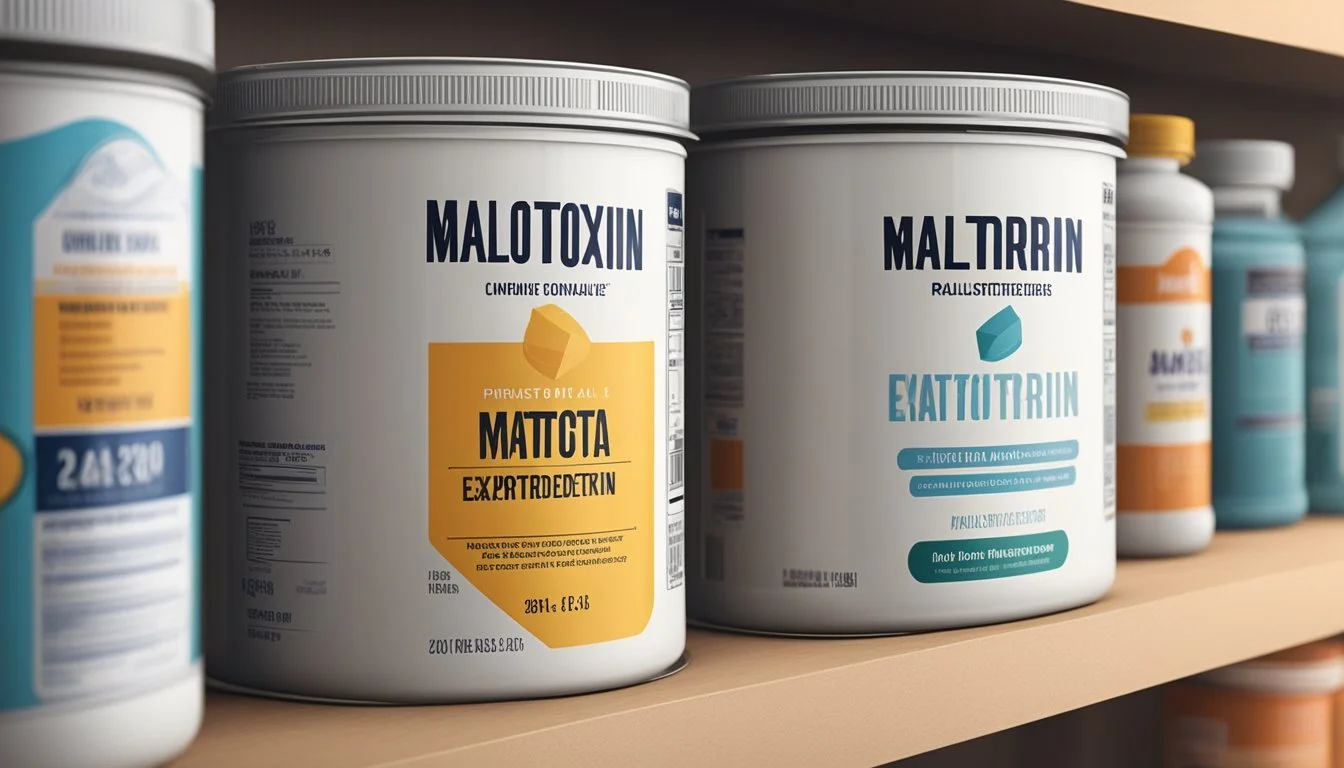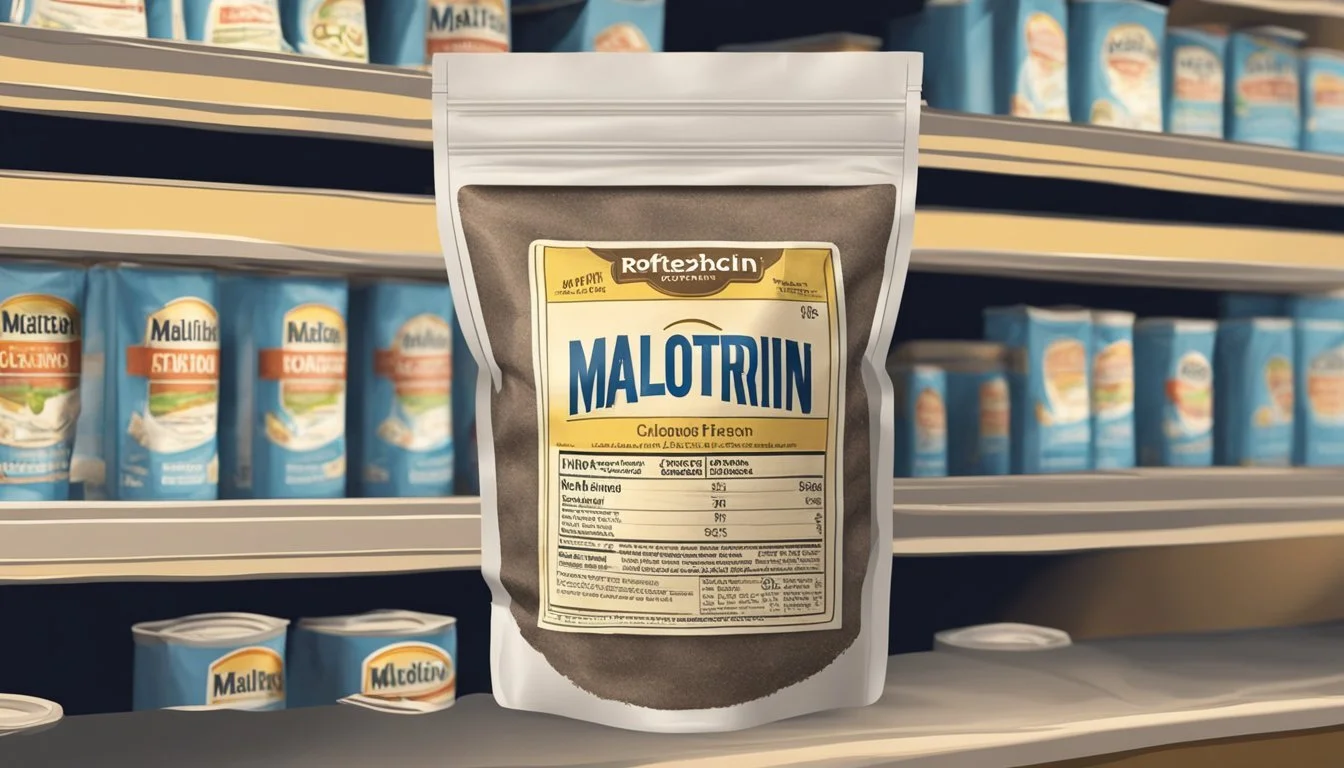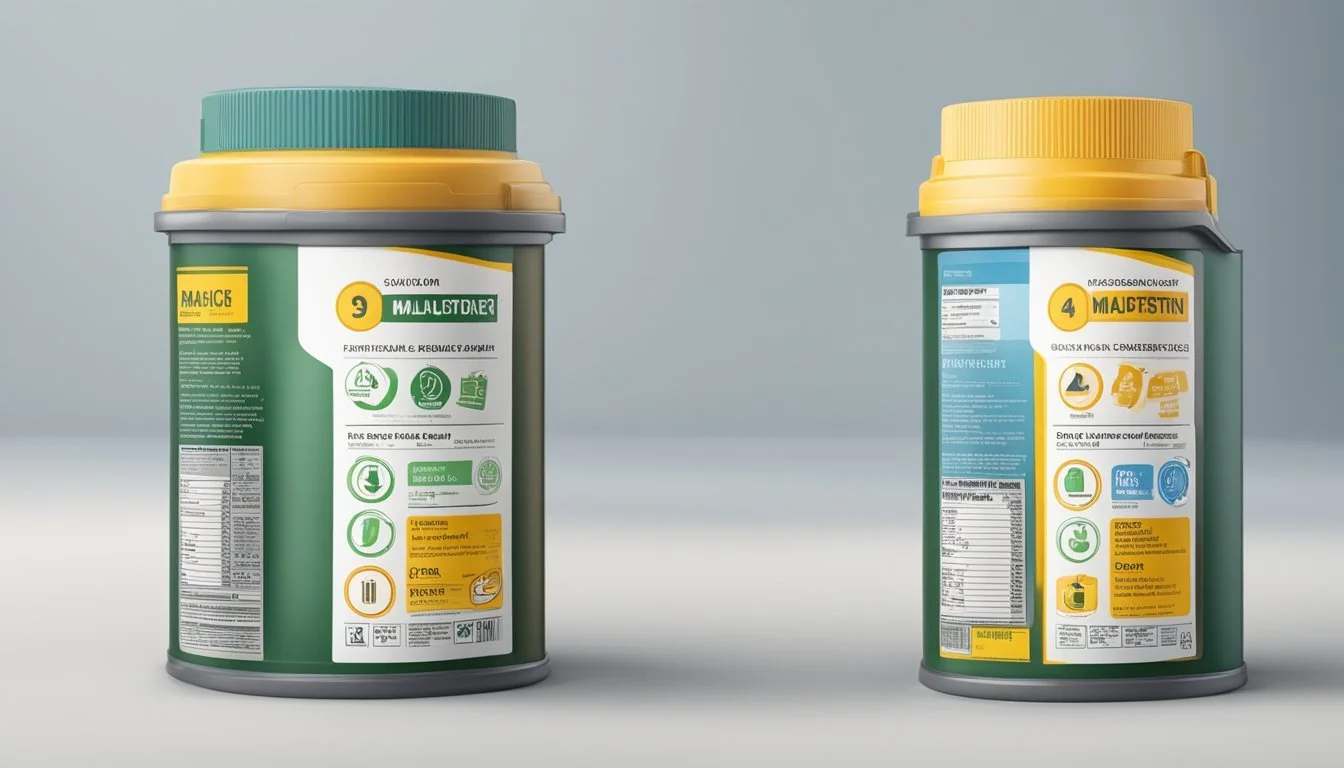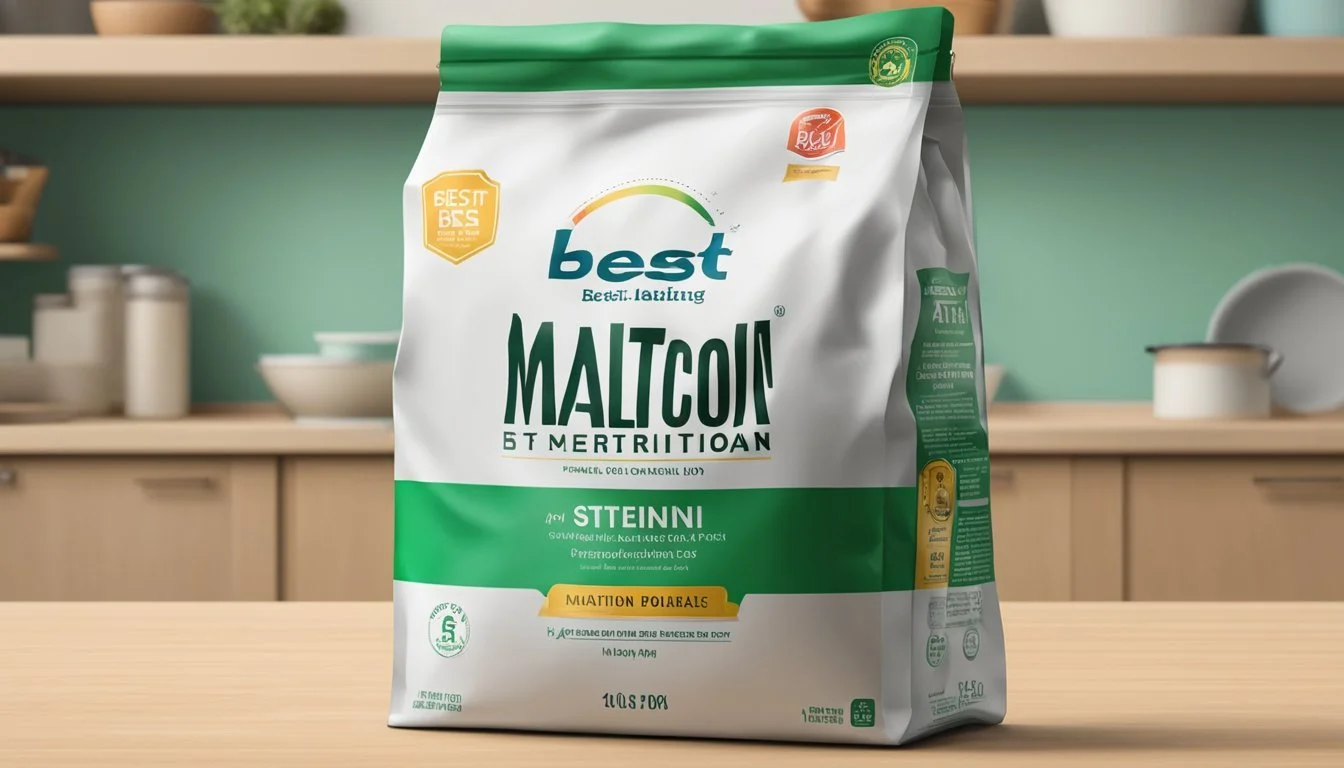Does Maltodextrin Go Bad?
Shelf Life and Storage Tips
Maltodextrin, a widely used food additive, often raises questions regarding its shelf life and safety. Derived from starches such as corn, potato, rice, wheat, and tapioca, maltodextrin is a highly processed carbohydrate. Maltodextrin rarely goes bad if stored properly due to its low moisture content and stable nature. This makes it a reliable option for extending the shelf life of various foods.
Despite being primarily composed of carbohydrates, maltodextrin contains no fiber. This characteristic means it can sit on pantry shelves for extended periods without compromising its quality. Storage conditions are key; keeping it in a cool, dry place helps prolong its usability.
People commonly encounter maltodextrin in processed foods, supplements, and even some medications due to its ability to enhance texture, flavor, and shelf life. Its presence in a balanced diet is generally seen as safe, provided intake levels are moderate. Its versatility and stability make maltodextrin an enduring ingredient in many culinary and pharmaceutical applications.
What Is Maltodextrin?
Maltodextrin is a carbohydrate derived from starch that is used frequently as an additive in processed foods. It helps to enhance texture, flavor, and shelf life.
Definition and Composition
Maltodextrin is a white, tasteless powder created by breaking down starches through hydrolysis, which uses water and enzymes or acids.
These starch molecules are derived from sources like corn, rice, potato, and wheat. The result is shorter chains of glucose, making maltodextrin a polysaccharide. Despite being plant-based, it undergoes significant processing before it can be used in foods.
Common Sources and Uses
Maltodextrin is most often produced from corn, although potato, rice, and wheat are also common sources. It is primarily used in processed foods such as:
Sauces
Salad dressings
Cereals
It acts as a thickener, preservative, and bulking agent. Additionally, maltodextrin improves the texture and appearance of food products, enhancing the eating experience. Its ability to dissolve easily in water makes it a versatile addition in the food industry.
Maltodextrin in Dietary Context
In the context of diet, maltodextrin serves multiple roles. For athletes, it provides a quick source of energy due to its rapid absorption and high glycemic index. This characteristic is beneficial during and after intensive exercise.
People managing diabetes might find the high glycemic index of maltodextrin problematic, as it can cause spikes in blood sugar levels. There is also a discussion in medical studies about its connection to intestinal inflammation. It is important for individuals, particularly those with dietary restrictions or health conditions, to be mindful of its presence in their foods.
Health Considerations
Maltodextrin, a commonly used food additive, has several implications for health, particularly concerning blood sugar levels, gastrointestinal health, gluten content, potential weight gain, and allergic reactions.
Impact on Blood Sugar and Insulin
Maltodextrin has a high glycemic index, which means it can cause quick spikes in blood sugar levels. For individuals with diabetes or insulin resistance, this can be problematic. Consuming foods with maltodextrin can lead to increased blood glucose levels, necessitating careful dietary management. People monitoring their blood sugar should be cautious with maltodextrin-containing products.
Gluten Content and Celiac Disease
Although maltodextrin can be derived from wheat, the manufacturing process typically removes gluten proteins, making it generally safe for those with celiac disease. However, it is crucial to check product labels for cross-contamination or specific certifications. For individuals with gluten sensitivity, consultation with a healthcare provider can provide additional guidance.
Gastrointestinal Responses and Conditions
Maltodextrin consumption can lead to various gastrointestinal issues such as bloating, gas, and diarrhea. These symptoms might be more pronounced in individuals with conditions like Crohn's disease or inflammatory bowel disease. Monitoring intake and seeking alternatives may help mitigate these effects. It’s advisable for those with sensitive digestive systems to limit their maltodextrin consumption.
Potential for Weight Gain and Diabetes
Maltodextrin is often included in processed foods which can contribute to weight gain if consumed in excess. Its high glycemic index not only impacts blood sugar but can also lead to increased hunger, fostering overeating. This can ultimately contribute to the development of type 2 diabetes. A balanced diet with limited processed foods is essential to manage weight and reduce diabetes risk.
Maltodextrin and Allergies
Some individuals might experience allergic reactions to maltodextrin, including skin irritations or respiratory issues. Although rare, these reactions necessitate caution, especially for those with pre-existing allergies. Consumers should carefully read labels and consult healthcare professionals if allergic symptoms arise after consuming products containing maltodextrin.
Regulatory Status and Safety Profile
Maltodextrin is widely used in the food industry, and its regulatory status and safety have been extensively reviewed by authoritative bodies. This section examines FDA's stance and the classification of maltodextrin as Generally Recognized As Safe (GRAS), as well as controversies and recent safety research.
FDA Stance and GRAS Classification
The FDA categorizes maltodextrin as a GRAS (Generally Recognized As Safe) substance, which means it is considered safe under the conditions of its intended use. This classification allows manufacturers to use maltodextrin in food products without needing specific approval. The FDA evaluates the safety of maltodextrin based on comprehensive scientific evidence and ensures that consumption levels are within acceptable limits.
Maltodextrin is derived from starches such as corn, potato, rice, and wheat. Despite being highly processed, its safety for consumption is widely acknowledged. The FDA's regulatory oversight includes ensuring that maltodextrin production processes meet specific safety and quality standards. Regular reviews and updates on maltodextrin's safety profile help maintain public trust and ensure its continued acceptance in the food industry.
Controversies and Safety Research
Despite its GRAS status, maltodextrin has been the subject of various safety concerns. Some studies suggest that maltodextrin consumption might contribute to intestinal inflammation or alter gut microbiota. These findings, albeit not definitive, necessitate further research to explore potential health risks associated with long-term use.
There have been concerns about the potential for increased blood sugar levels due to maltodextrin’s high glycemic index. This is particularly relevant for individuals with diabetes. However, current evidence does not conclusively link maltodextrin to chronic diseases like cancer or colorectal cancer. Ongoing research aims to provide clearer insights into these areas.
Maltodextrin Stability and Shelf Life
Maltodextrin is commonly used as a food additive due to its ability to improve texture, flavor, and shelf life. Various factors influence its stability, including storage conditions and concentration. Detecting spoilage can help ensure product safety.
Factors Affecting Stability
The stability of maltodextrin primarily depends on factors such as storage temperature, humidity, and exposure to air. Maintaining maltodextrin at a stable temperature, ideally around 25°C (77°F) and under vacuum packaging conditions, can prolong its shelf life.
Different concentrations of maltodextrin also affect its stability. Studies have shown that higher concentrations like 30% w/w provide better storage stability over extended periods. Exposure to high temperatures or humidity can degrade its quality and lead to spoilage.
How to Detect Spoilage
Detecting spoilage in maltodextrin involves checking its physical and chemical characteristics. Look for changes in color, smell, and texture. Spoiled maltodextrin may appear more turbid or discolored and can develop off-odors.
Any signs of clumping or moisture can indicate spoilage, often due to improper storage. Testing for microbial contamination like E. coli and Salmonella is also crucial. These bacteria can thrive in compromised storage conditions, leading to safety hazards.
Frequently checking these parameters can help maintain the quality of maltodextrin and ensure it is safe for use in food products.
Nutritional Aspects and Dietary Considerations
The nutritional value of maltodextrin focuses primarily on its energy contribution and carbohydrate content. It influences dietary conditions, especially for individuals managing blood sugar levels, and has several alternatives such as fiber-rich foods and artificial sweeteners.
Energy Contribution and Carbohydrate Profile
Maltodextrin provides significant energy due to its high carbohydrate content. It is often used as a quick source of energy in sports drinks and energy bars.
Nutrient Amount per Teaspoon Calories 30 Carbohydrates 3.8 grams
It lacks essential nutrients like vitamins and minerals. This makes it an energy-dense but nutrient-poor option. The breakdown of carbohydrates in maltodextrin can lead to rapid spikes in blood sugar levels.
Influence on Diet Specific Conditions
Individuals with diabetes or insulin sensitivity should be cautious with maltodextrin. It can cause significant increases in blood sugar levels due to its high glycemic index.
Furthermore, some studies suggest that maltodextrin might contribute to gastrointestinal issues, such as intestinal inflammation. People managing their weight or sugar intake should consider these factors when including maltodextrin in their diet.
Maltodextrin Substitutes and Alternatives
For those looking to avoid maltodextrin, various alternatives provide similar functions without the same dietary impacts. Stevia and sugar alcohols like erythritol and xylitol offer sweetness without high glycemic spikes.
Fiber-rich foods such as vegetables and fruits, as well as snacks made from whole grains and cereals, can also provide healthier options. Artificial sweeteners can serve as viable replacements in many applications where maltodextrin is typically used.
Manufacturing Processes and Quality
Maltodextrin is produced through specific methods involving hydrolysis and chemical processing. Quality markers and production standards ensure that the final product is safe and effective for use in various food applications.
Hydrolysis and Chemical Processing
Maltodextrin production begins with hydrolysis, a chemical process that involves breaking down starches. Starches from sources like corn, potato, wheat, rice, and tapioca are typically used.
In hydrolysis, starch is treated with acids or enzymes to break it into smaller carbohydrate chains. These hydrolyzed starches are then refined to remove any residual proteins or fats.
The result is a white powder composed of short sugar chains. It is then dried to form the final maltodextrin product, which is used primarily as a food additive.
Key Points:
Sources: Corn, potato, wheat, rice, tapioca
Process: Hydrolysis with acids or enzymes
Outcome: Short sugar chains, white powder form
Quality Markers and Production Standards
Quality markers in maltodextrin manufacturing focus on purity, consistency, and safety. Producers adhere to stringent production standards to ensure that maltodextrin meets regulatory requirements.
GMO considerations are also crucial, with non-GMO variants available. The final product must be free from contaminants and meet specific dextrose equivalent (DE) values.
Advanced testing methods are employed to verify quality, including moisture content analysis and microbial testing. This guarantees that maltodextrin retains its stability and efficacy as a food additive.
Key Points:
Purity and Consistency: Ensured through advanced testing
GMO Considerations: Availability of non-GMO variants
Safety Standards: Compliance with regulatory requirements
Role in Sports and Physical Activity
Maltodextrin plays a significant role in sports and physical activity by helping to replenish muscle glycogen and boost endurance and performance. It is commonly found in energy drinks and supplements tailored for athletes.
Benefits for Athletes and Performance
Maltodextrin is a carbohydrate that provides a rapid source of energy, making it invaluable during intense physical activity. When consumed, it helps replenish glycogen stores in the muscles, which can enhance endurance and performance.
Athletes often use maltodextrin for quick recovery post-exercise. This carbohydrate aids muscle glycogen resynthesis, decreasing fatigue and allowing for better performance in subsequent activities. Studies indicate that consuming maltodextrin can improve exercise performance by maintaining blood glucose levels and preventing early fatigue.
Maltodextrin in Energy Drinks and Supplements
Maltodextrin is a common ingredient in energy drinks and supplements due to its rapid absorption rate. It provides a quick energy boost, crucial during prolonged endurance activities like marathons or cycling races.
Energy drinks containing maltodextrin help maintain glycogen levels, reducing the exhaustion period. They are often consumed by athletes in the middle of a competition to sustain energy levels.
Supplements with maltodextrin are also used post-workout to aid in muscle recovery and replenish glycogen stores. The inclusion of maltodextrin in these products maximizes their effectiveness, supporting continuous and high-intensity training sessions.







